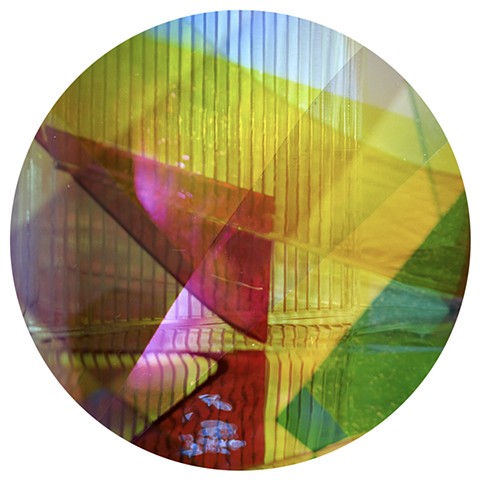Secret Gallery
Piecing Light
Studying the properties of glass and the principles of photography - light and time.
On Process
The above folders chronicle my work-in-progress on trying to translate the language of glass and light into pictorial form, and consider how the role of Phase One technology will inform this process. Some I find successful, some I downright hate, and some I'm just not sure about.
As an image maker who uses multiple exposures on film, and thinks with images in my hands like a sculptor, I'm thinking about how I adjust my process to fit with the Phase. this is a challenge and I just have to work through it.
I've been experimenting with studio lighting techniques and natural sunlight to determine what kind of light etches the latent patterns of the glass on the surface most effectively. I've also been experimenting with layering up compositions of glass into corners and capturing light with focus stacking and in-camera multiple exposures. I would like to try shooting these temporary glass sculptures on a role of 120 film to continue my process. And wonder if the collaboration could involve film scanning to produce the limited edition print? It might highlight the Phase's advantages and capabilities for film scanning, and I've used it in other projects.
Artist Statement:
This body of work builds on my previous work Mirror Spaces, and a grant I wrote in 2023 titled Light Work.
I am interested in the concept of a light library. A method of collecting and storing traces of immaterial energy seems impossible, like trying to catch light in a jar. Using off-cuts and scrap pieces of coloured glass generously lent to me by stained glass window restorer John Storey, I create my own assembled compositions that attempt to defy gravity and time. Placing these temporary sculptures in pure sunlight I allow the passage of time and the slow durational movement of the sun to activate each sculpture. Photographing them throughout the day, I build an archive that traces the subtle nuances of glass as a material and it's relationship to light. Light and time, both crucial ingredients in photography are tested. My work as an image maker and sculptor has brought me to glass to study it's cultural and historical origins as both a practical material and one that is embedded within art history, the history of photography, and craft. The process of making glass is volatile and involves intense heat and light. Light is volatile, we need it for growth and nourishment, for mental health, but it also burns our eyes and skin, and contributes to global rising temperatures. Light is also needed to make images in photography - for a camera to make images it needs to let in light so the sensor or the film can imprint an image. Lenses are made of glass. Light is shaped and bends when it enters glass. The unique combination of glass as a material and the camera as a tool isolates this material in space, allowing the language of glass, it's subtle traces of colour and etched patterns to become.....The very language of glass, it's use in optics, has altered our perception of reality; this includes my camera lens. In this way I highlight glass and its place within the history of photography and art history, and the cultural and social contributions it makes to our everyday lives.
The subject of these photographs is not only glass, but it's ability capture and enable us to see the effects of pure light. Both of these materials are present within the camera and the photography process. Glass has become so embedded in our everyday lives that we often look through it without noticing it's presence. From smartphone screens, to windows, fibre-optic cables, lenses, skyscrapers, architecture, and solar panels, glass as a material has become fundamental to our contemporary way of life. Despite having origins in ancient civilizations in both art and utilitarian life, glass and it's properties are embedded both aesthetically and practically within everyday life. And it often escapes our notice.
Ultimately my goal is to intensify our experience of time, and the slow passage of light across space by focussing on subtleties of glass that might often escape our notice as we navigate the spaces we create for ourselves. In doing so, I explore this paradox....we need sunlight for nourishment, warmth, growth, and life, but sunlight is also a destroyer of materials, our eyes, and skin. It warms the planet and contributes to climate change. In-between this paradox is glass; a thin impenetrable membrane occupying the liminal spaces between us and the outside world.
©Natalie Hunter


